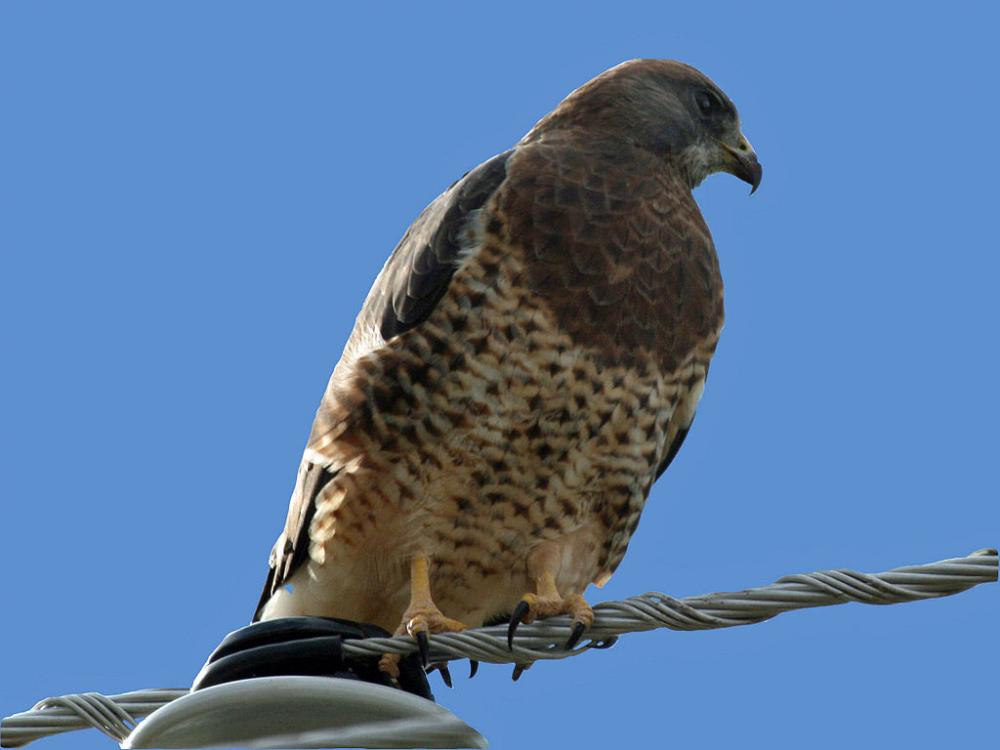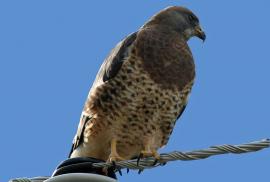Guide to Boreal Birds
Overview
Named after the English naturalist William Swainson (1789-1855), this species is highly gregarious, often migrating in great soaring flocks of thousands of birds. Its migrations are longer than those of other species; most individuals go all the way to Argentina to spend the winter, making a round trip of as much as 17,000 miles (27,000 kilometers). On its breeding grounds on the Great Plains, this hawk preys mainly on rodents and huge numbers of grasshoppers.
Description
18-22" (46-56 cm). W. 4' 1" (1.2 m). A large hawk, uniform brown above, white below with warm-brown breast; tail dark brown and indistinctly banded. Longer, more pointed wings than Red-tailed Hawk. Young bird similar to immature Red-tail, but tends to have darker markings on the breast, whereas young Red-tails are more heavily marked on flanks and belly. A rare all-dark form also occurs. Soars with wings held in shallow V.
Voice
Long, plaintive, whistled kreee.
Nesting
2-4 white eggs, unmarked or lightly spotted with brown or black, in a large nest of sticks, often placed conspicuously in an isolated tree.
Habitat
Open plains, grasslands, and prairies.
Range/Migration
The fall migration of this species is a spectacular phenomenon, as virtually all of the world's population of Swainson's Hawks funnels through Central America within a few days. Until very recently, these hawks were thought to disperse across the whole of South America, and no one really knew where or how they spent the northern winter. Not until 1995 did biologists discover the relatively small area in the pampas of Argentina where these hawks spend the winter feeding almost exclusively on grasshoppers. While studying a population of Swainson's Hawks in eastern Oregon, biologists noticed that there were years in which as many as 40 percent of the breeding birds were not returning in the spring. This led to the radio-tracking of a bird to the previously unknown wintering grounds in Argentina. What the biologists found there was shocking: The hawks were feeding on insects that had been treated with pesticides and were dying by the thousands. Conservationists appealed to the Argentines, who made several changes in their pest-control practices, which have reduced Swainson's Hawk mortality.
Breeds across much of western United States south to northern Mexico and Texas; locally in Alaska, Yukon, and Mackenzie. Winters chiefly in tropics, but small numbers winter in Florida.



